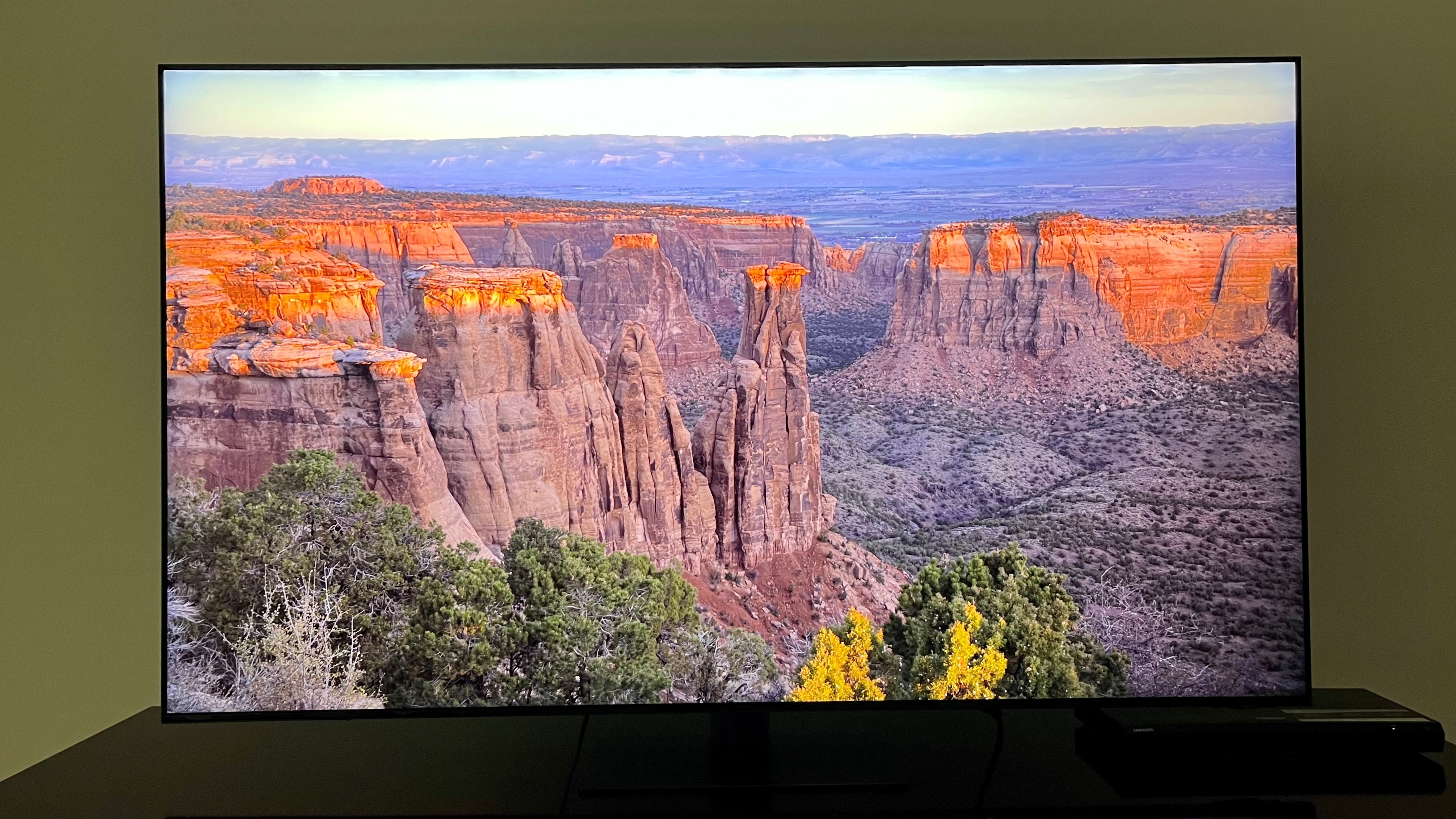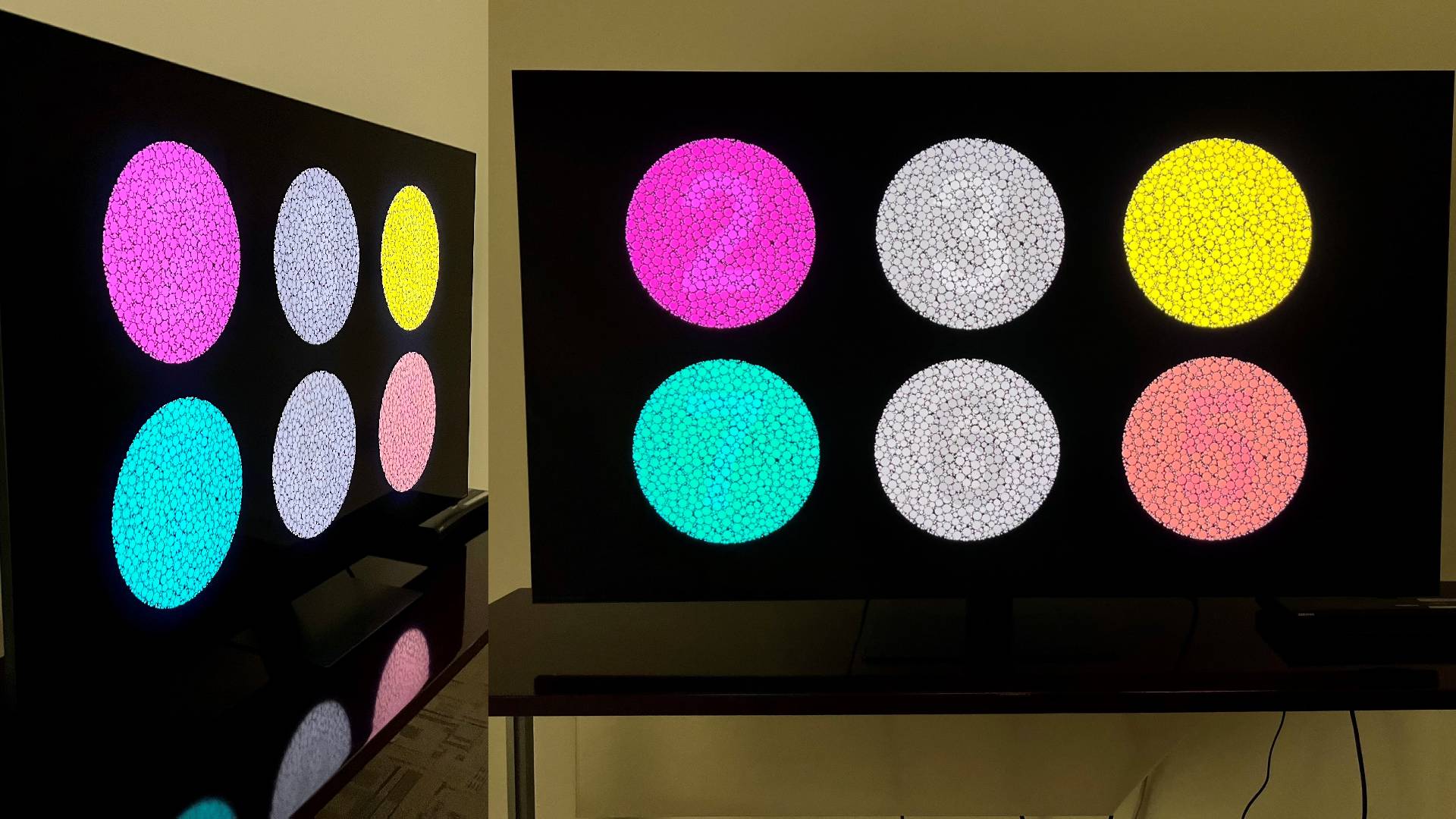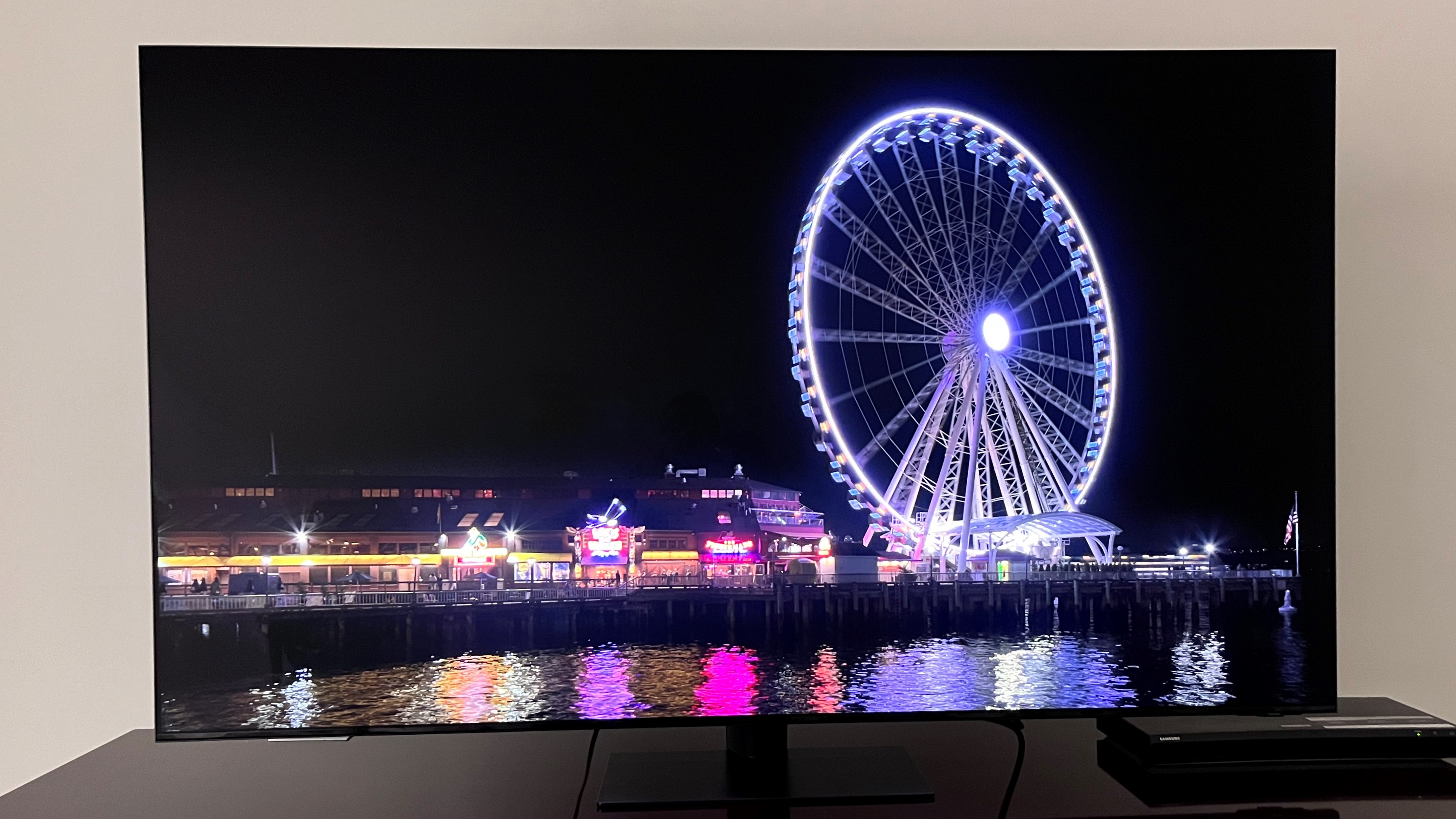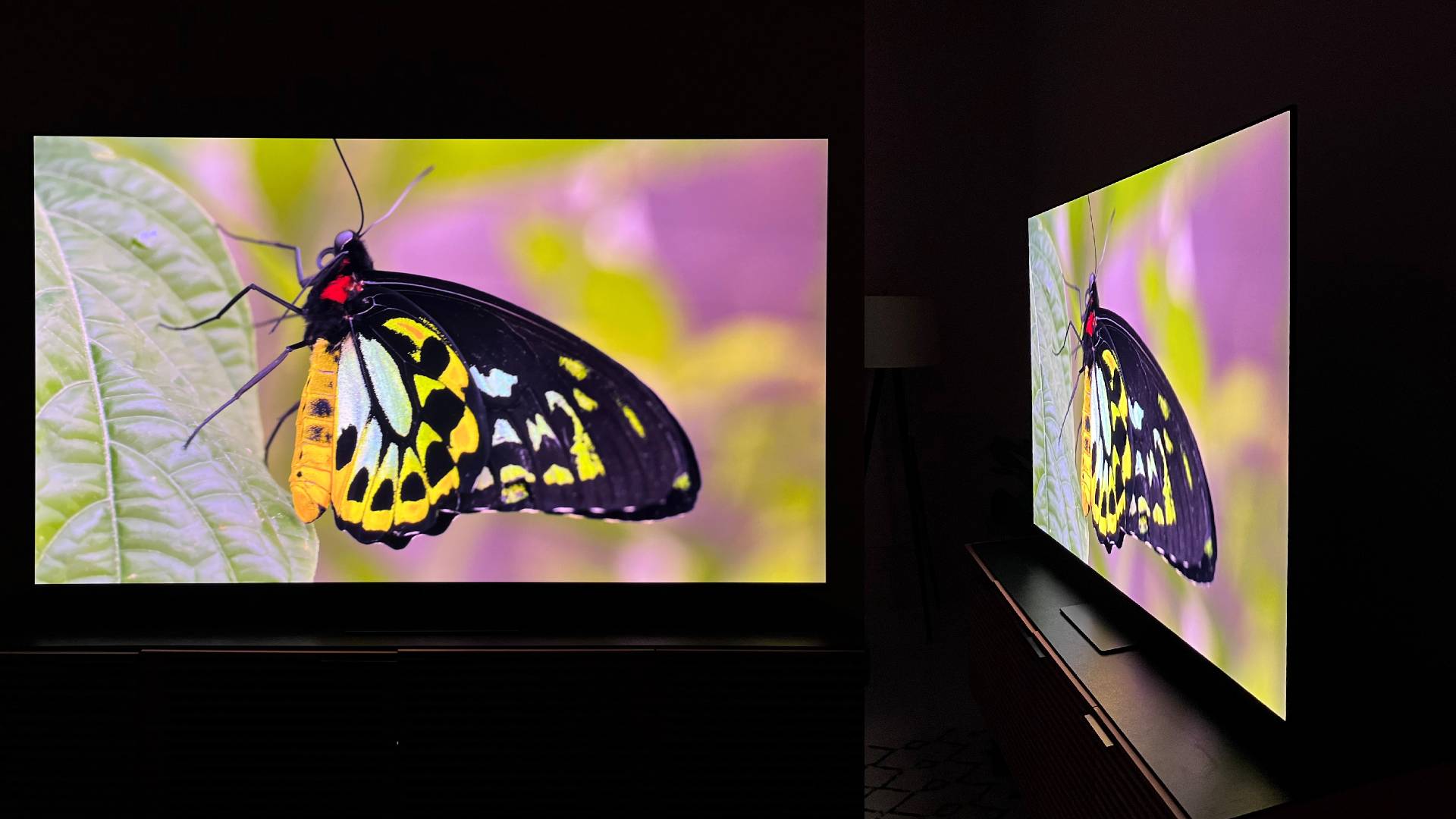The best QLED TVs are catching up to OLED TVs
Thanks to mini-LED backlighting, QLED TVs are making huge strides

Over the past few years QLED TVs have shown huge potential. They can’t quite replicate the perfect blacks of OLED TVs, but QLED screens can be significantly brighter. Yes, there are clear areas for improvement, but you can’t deny this is a TV tech going from strength to strength.
There’s no better poster child for the evolution of QLED panels than the Samsung QN95C. We recently went hands on with this next-gen QLED TV at an event in New Jersey, and hoo-boy is it a stunner. Indeed, it’s such an impressive 4K screen, even the best OLED TVs should be getting worried.
The Samsung QN95C isn’t your garden variety QLED TV from a couple of years ago, though. Oh no. This flagship Neo QLED model combines a mini-LED backlight with a quantum dot layer to provide far more convincing black levels than a standard LCD TV, while also delivering unrivalled brightness and supreme color performance.

Lighting the way
And it’s that backlight that makes the QN95C such an exciting prospect. Compared to the LED-backlights regular QLED panels use, mini-LED is a game-changer. When the tech is deployed successfully, mini-LED backlighting allows TVs to get much closer to OLED levels of black than standard LED TV screens.
If all these various acronyms are confusing you, the simplest way to describe the benefits of mini-LED is this: it’s a far better way of backlighting LED/LCD TVs.
As the term “mini” implies, mini-LEDs are much smaller than the lamps used in regular LED-backlit TVs. Because of this, a higher density of lamp modules can be packed into the backlight array, and finer local-dimming control can be exerted over them. A typical mini-LED uses hundreds or even thousands of dimming zones to deliver pictures that aren’t only black, but uniformly black. By contrast, LED-backlit screens are normally limited to dozens of dimming zones, and as such, they can’t deliver consistent panel brightness.
It’s this matter of uniformity that has long put me off traditional LCD/LED TVs. Quite frankly, screen uniformity often sucks on LED panels. Owing to their limited dimming zones, these TVs can’t light your screen in a consistent manner. With certain areas of the panel appearing brighter than others, this leads to what’s commonly described as ‘Dirty Screen Effect’.
To put DSE into layman’s terms, parts of the picture on most LED TVs will look somewhat smudgy during panning shots. That’s because a traditional LED TV doesn’t have enough dimming zones to uniformly light the screen. Because of this limitation, certain areas of LED panels will be brighter than others, and nothing shows this fault off more prominently than watching sports. The best/worst example? Panning shots across a soccer field during a crunch English Premier League match.
By contrast, OLED TVs are self-emitting, meaning they can turn off individual pixels during dark scenes to deliver truly perfect blacks and superior screen uniformity. This makes them the ultimate TV tech for movie lovers. As someone who’s watched Jurassic Park roughly 17,000 times, the last thing I want to witness is ‘blooming’ or ‘haloing’ cropping up when Jeff Goldblum’s name appears during the end credits.

Bloom with a view
Blooming is a fault even mini-LED TVs can suffer from. This problem surfaces in dark scenes, with light from bright areas seeping into black parts of the screen. Though the effect is severely reduced on most mini-LED back-lit screens compared to standard LED TVs, it can still be a distracting issue. I briefly owned the Samsung Odyssey Neo G9, and while this colossal 49-inch monitor impressed on many levels, inconsistent auto-dimming of its mini-LED screen meant blooming would appear during darker scenes in games or movies.
Part of the reason I’m so excited for the Samsung QN95C is due to it all but banishing blooming during our brief tests. Though lighting conditions weren’t perfect at the New Jersey Samsung event we attended, we still saw enough to suggest this new Neo QLED TV comes close to eliminating the problem thanks to some of the best local-dimming features we’ve ever seen.
These expertly executed dimming zones mean the QN95C is able to deliver uniform blacks that are almost on a par with OLED. And that’s not the only killer feature of this upcoming 4K TV. General screen uniformity in lighter scenes also appeared to be excellent, something Samsung attributes to “improved brightness and grayscale control to accurately render both luminance and extreme details across the whole screen”.
As someone who lost the run of himself obsessing over Dirty Screen Effect when panning the camera across the skies of Los Santos in GTA 5 on a sub-par Sony LED TV back in the day, the QN95C’s seemingly stellar screen uniformity makes me unreasonably happy.

Not that upcoming OLED TVs are going to lay back and let mini-LED back-lit TVs like the QN95C make up ground without a fight. Ironically, it’s actually another Samsung TV that could end up putting the company’s new Neo QLED panel somewhat in the shade. Enter the Samsung S95C QD-OLED TV.
This stunning 4K OLED panel has just gone on sale in the US, and from our early impressions, it looks like it could well be one of the best TVs in 2023. By using its own quantum dot filter, the S95C is able to reach a staggering peak brightness of nearly 1,400 nits, which rivals the light output of even the best QLED TVs. Throw in the infinite blacks OLED is famed for and a new ‘Quantum HDR OLED Plus’ feature, which lets the S95C fine-tune brightness on a per-pixel level, and even the QN95C starts to look outgunned.
Still, the very fact a QLED TV has put itself into the conversation for rivalling the best OLED TVs on the market is quite the accomplishment. While I’m unlikely to replace my current OLED set anytime soon, the fact that the best Samsung QLED TVs are progressing to the point where they can match and even better OLED in some areas is a cause for celebration.
Get daily insight, inspiration and deals in your inbox
Sign up for breaking news, reviews, opinion, top tech deals, and more.
Dave is a freelancer who's been writing about tech and video games since 2006, with bylines across GamesRadar+, Total Film, PC Gamer, and Edge. He's been obsessed with all manner of AV equipment ever since his parents first bought him a hideously garish 13-inch CRT TV (complete with built-in VCR, no less) back in 1998. Over the years he’s owned more plasma and OLED TVs than he can count. On an average day, he spends 30% of his waking existence having mild panic attacks about vertical banding and dead pixels.
